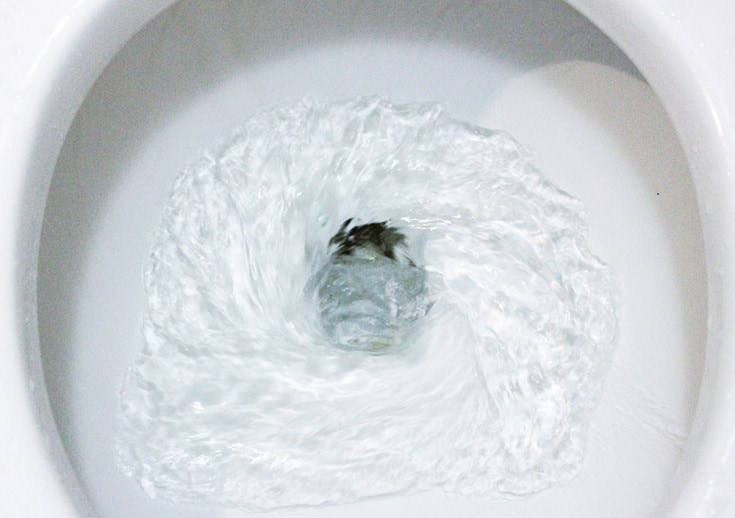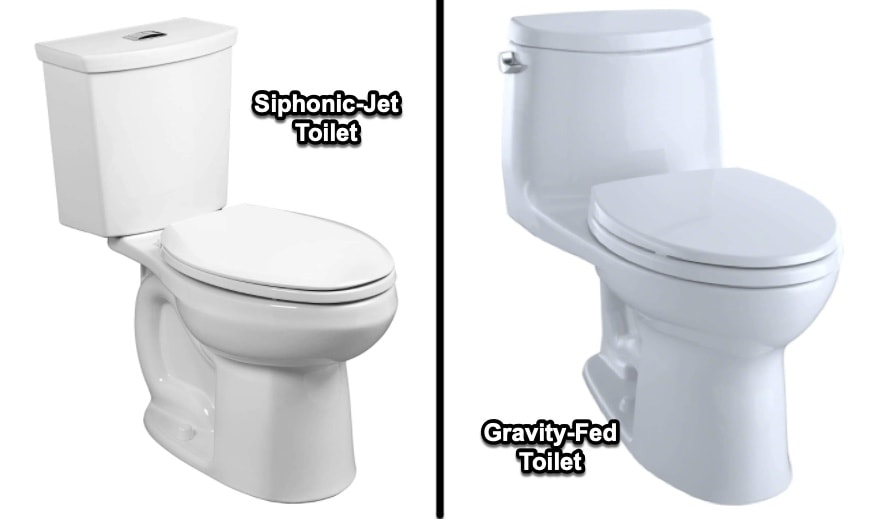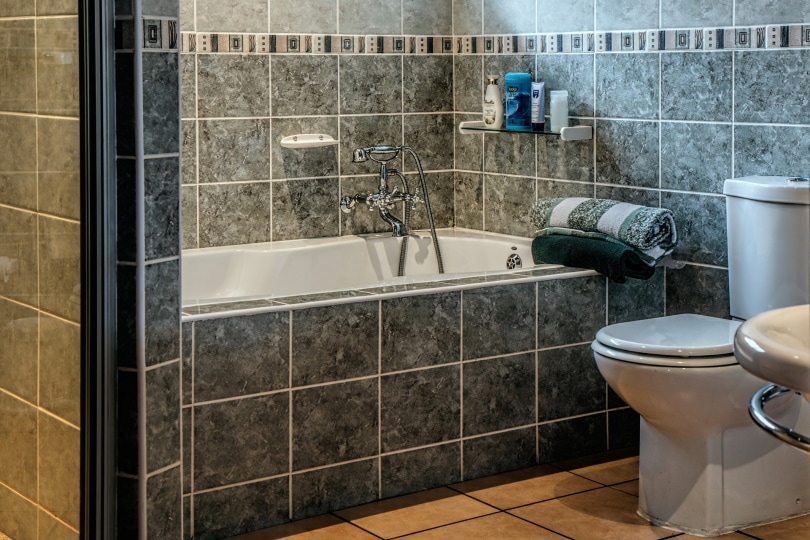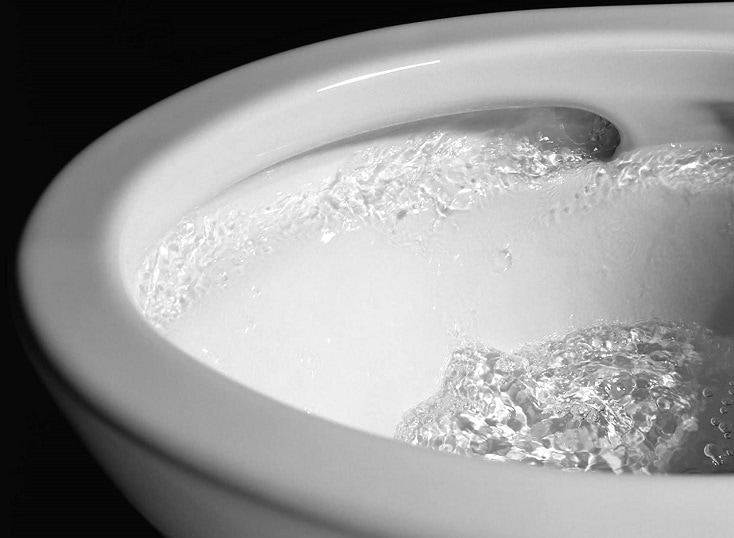Siphonic Jet vs Gravity-Fed Toilet: Which One Should You Choose?
-

- Last updated:

Toilets are arguably the most useful items in the home, and when they don’t function correctly, a design flaw could be the reason. One of the most important factors to consider when shopping for a new toilet is the flushing mechanism. There are two main types of mechanisms: the siphonic jet and the gravity-fed toilet. We’ll discuss their differences so that you can decide which design is ideal for your home.
What Is a Siphonic Jet Toilet?
Siphonic jets are the most common type of toilet in the United States, and with good reason, they work exceptionally well. A siphonic jet toilet features an S-shaped or reverse-P trapway, with one end connecting to your home’s plumbing and the other to the inlet from the bowl.
This trapway design creates a siphon that forces waste matter down the tubes. In addition to the S- or P-shaped trapway, siphonic jet toilets have a large water surface, and their water levels are always above the bowl outlet.

How Does a Siphonic Jet Toilet Work?
After pressing the flush lever, the cistern sends water into the bowl forcefully. The water in the bowl initially rises before it subsides rapidly and takes the waste with it. This action is by design, and it involves the tank releasing water faster than it can exit the bowl.
When that happens, a vacuum (siphon) is created, which pulls the waste out. This siphoning action is so powerful that these toilets rarely leave waste or streak marks in the bowl. After a few moments, you should hear a gurgling noise indicating the vacuum is broken. The remaining water in the tank replaces the water the bowl lost.
How Much Water Do Siphonic Jet Toilets Use?
Most siphonic jet toilets use around 4 gallons of water per flush. However, since the government enacted water usage laws that require a toilet to use no more than 1.6 gallons of water per flush, manufacturers of siphonic jets have had to rethink their designs to adhere to the guidelines.
Fortunately, the new siphonic jet models can still work efficiently, even when utilizing less water per flush.
Why Choose Siphonic Jet Toilets
As mentioned, one of the telling characteristics of a siphonic jet toilet is that its water level in the bowl is high. A high water level is advantageous since it helps seal noxious gases from the plumbing below. Siphonic jet toilets can have a water level that is twice as high as that in gravity-fed toilets.
Additionally, siphonic jet toilets generally leave cleaner bowls and rarely leave waste or skid marks in the bowl. Again, even though they have a powerful flush, it isn’t very loud.
What Are Gravity-Fed Toilets?
Gravity-fed toilets are a staple in most of Europe. However, more Americans are buying them since they reduce water consumption.
How Do Gravity-Fed Toilets Work?
As you can tell from their name, they manipulate the force of gravity to aid in the flushing process. Nonetheless, it is not as complicated as it sounds, and the mechanism is quite simple; upon pressing the button or lever, the tank forcefully releases water and sends it directly to the bowl.
Since gravity-fed toilets feature straight trapways, the sheer weight of the water creates a gravitational pull that forces water and waste through the straight channel. As a result, they rarely have clogging problems.
How Much Water Do Gravity-Fed Toilets Use?
As mentioned, gravity-fed loos are designed to minimize water consumption. They typically come in a dual-flush design, which allows you to choose between a half and full flush. A half flush uses 0.8 gallons, while a full flush uses 1.6 gallons. This means you do not have to empty the tank after every short flush.
Why Choose Gravity-Fed Toilets?
In addition to helping you conserve water, gravity-fed toilets also take up less space due to their design, which makes them ideal for smaller spaces. Additionally, their straight trapway and flushing mechanism ensure that clogging is almost impossible.
Siphonic Jet vs Gravity-Toilets: Pros and Cons
Each of these toilet types has unique advantages and drawbacks. Let us pit them against each other:

- Powerful flush action that leaves cleaner bowls
- Easy to maintain
- Limited odor
- Impossible to clog
- Saves water
- Uses up less space
- Prone to clogging
- Uses a great deal of water
- Take up space
- Susceptible to skid marks
- Can be smelly

Siphonic Jet vs Gravity-Fed Toilet – The Verdict
Ultimately, the choice of toilet will depend on your needs and preferences since both designs have unique advantages and drawbacks. Therefore, it is a matter of what you are willing to compromise. If you decide to get a gravity-fed toilet, consider the TOTO Ultramax II since it’s not prone to leaving skid marks. It is also quite comfortable.
If you desire a siphonic jet toilet, you can try the American Standard 2887218.020 H2 Option, as it is extremely powerful and still limits water wastage. If you have questions, do not hesitate to reach out to us; we will be glad to help make things clearer for you.
Featured Image Credit: New Africa, Shutterstock
Contents


